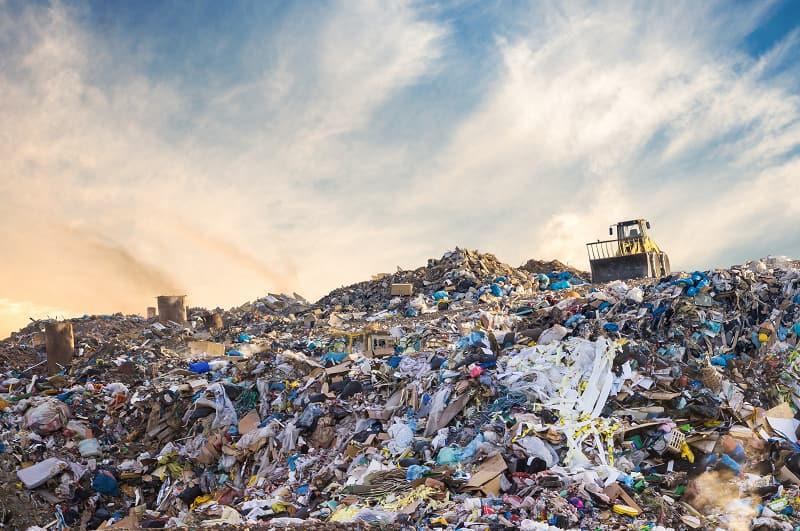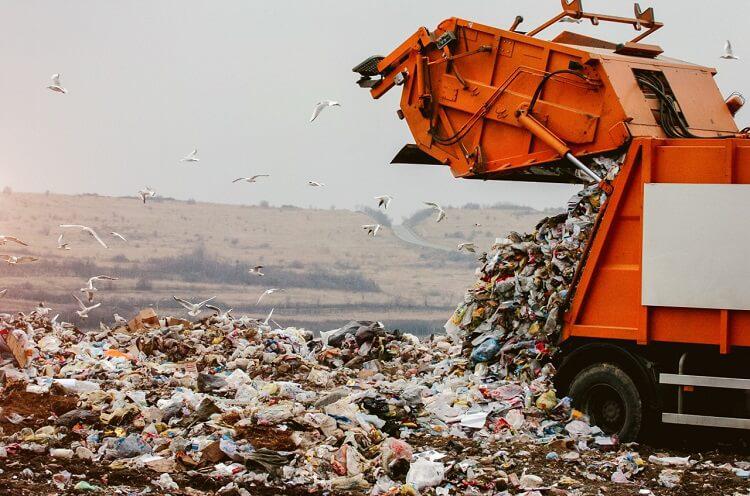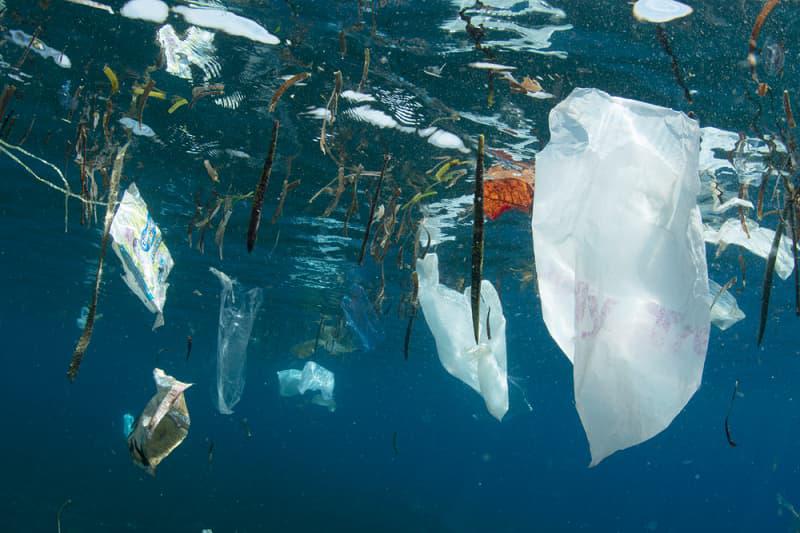40 Mind-Blowing Statistics About Waste Management (Updated March 2022)
Updated March 2022 | Chapter 4 of 7

Society is creating junk at an alarming rate — and a lot of that junk ends up in landfills.
The world has a junk problem and nothing makes it more clear than these 40 mind-blowing statistics about the amount of waste society creates, where that waste is going, and the state of recycling.
Keep reading to get the details and learn how we can work together to take control of the world’s waste problem.
The United States generates an average of 4.9 pounds of trash per person every day - the highest amount of waste per person of any country. (source)
- More than half the world’s population does not have access to regular trash collection. (source)
- The US creates over 624,000 metric tons of waste per day. (source)
- Nevada generates the highest amount of waste per person: 38.4 tons. (source)
- The US threw out over 292 million tons of trash in 2018. (source)
- The US spends about $200 billion a year on solid waste management and lost energy resources from trash disposal. (source)
- The United States Municipal Solid Waste Management Market is expected to surpass $25 billion by 2024. (source)
- Annual waste generation is expected to increase to 3.4 billion metric tons by 2050. (source)
While companies constantly tell us we need more stuff, upgrading to the latest tech, fashions, gear, and other items often means getting rid of things you already own. The problem? Most people don't think to donate, recycle, or repurpose their old, unwanted items so they end up in a landfill.
The US is on track to run out of room in landfills by 2036. (source)
- The US has 3,091 active landfills and over 10,000 closed municipal landfills. (source)
- Unregulated or illegal dumpsites serve about 4 billion people and hold more than 40% of the world’s waste. (source)
- Roughly 80% of the items buried in landfills could be recycled. (source)
- Landfilling accounts for approximately 50% of all municipal solid waste. Recycling constitutes 25% of waste while composting only accounts for 9%. (source)
- In 2017, landfilling was the most prominent form of waste removal, accounting for over 60% of the total waste management market. (source)
- Global annual waste generation is expected to jump from 2.01 billion tons in 2016 to 3.4 billion tons over the next 30 years. (source)

Recycling 1 million laptop computers can save enough energy to run 3,500 US homes for a year. (source)
- Only 41 nations compile e-waste statistics. (source)
- The world generated 53.6 million metric tons of e-waste in 2019 — a 21% increase in just 5 years — and only 17.4% was recycled through appropriate channels. (source)
- An estimated 40% of the heavy metals in US landfills come from discarded electronics. (source)
- While electronic waste represents only 2% of the debris dumped in American landfills, it equals around 70% of toxic waste. (source)
- Approximately 350,000 mobile phones are disposed of each day. (source)
- Only 12.5% of e-waste is recycled. (source)
- Global e-waste is expected to grow by 8% per year. (source)
Almost every home in the US has a television, computer, and smartphone — if not several of each. As technology advances and newer models replace older ones, where do we dispose of these devices? Unfortunately, when electronics end up in landfills, it puts the environment at risk. In addition to taking hundreds of years to break down, electronics leak toxic chemicals like lead and mercury into the soil.
By 2040, there will be 1.3 billion tons of plastic waste present in the environment. (source)
- The US generates more plastic trash than any other nation. (source)
- Plastic takes more than 400 years to degrade. (source)
- A staggering 8 million metric tons of plastic trash winds up in our oceans each year. (source)
- 91% of plastic isn't recycled. (source)
- A total of 8.3 billion metric tons of plastic has been produced, and 6.3 billion metric tons of that has become plastic waste. (source)
- Nearly 300 million tons of plastic waste are produced every year. (source)
- Plastic wastage is growing at an annual rate of 9%. (source)
- The paper and plastic cups, forks, and spoons disposed of annually could stretch 300 laps around the equator. (source)
- The US throws away as many as 35 billion plastic water bottles each year. Only some 25% are recycled. (source)
- The Great Pacific Garbage Patch, a floating island of garbage located halfway between Hawaii and California, is estimated to be about 620,000 square miles in size — that’s twice the size of Texas and three times the size of France. (source)
- Around 66% of our energy could be saved by producing plastic products from recycled plastics instead of brand new materials. (source)

Only 13% of trash is recycled globally. (source)
- 75% of America’s waste is recyclable, yet we only recycle 30% of it. The US throws away $11.4 billion worth of recyclable containers and packaging every year. (source)
- In 2018, we recycled more than 69 million tons of solid municipal waste, with paper and paperboard accounting for approximately 67%. (source)
- The recycling rate in 2018 (including composting) was 32.1%. (source)
- China was importing about 45% of America’s paper, plastics, and other recyclables before new restrictions were put into effect in 2018. (source)
- Over the first 5 months of 2018, recycled plastics from the US to China dropped by 92%. (source)
For three decades, China imported 45% of the world’s plastic waste. In 2017, the country decided to impose a ban on imported plastics. The new restrictions went into place in 2018 and have since caused trouble for the US and other countries that previously relied on exporting plastic waste overseas. For example, California was exporting approximately one-third of its recyclable material to China before the new restrictions were imposed.
How do we fix the world's junk problem?
There isn’t one solution to fix all of these problems. However, sustainable junk removal is a good starting point. What exactly does that mean? As a society, we need to be more conscious about donating first, then recycling and reusing second.
By consciously exercising more care in how we get rid of junk, we can minimize the waste we generate and reduce our dependence on landfills — and The Junkluggers strives to make it easy.
Since our company’s founding in 2004, The Junkluggers has focused on providing eco-friendly junk removal services. When we arrive at a pickup, we make sure to handle your junk professionally before sorting, donating, recycling, and upcycling it. It’s one small way that we give back to the environment and the communities we serve.
To learn more about our sustainable junk removal services or book a free on-site junk hauling estimate in your city, get in touch with your local Junkluggers team. In the meantime, be sure to check out the other blog posts in this junk removal series:
- Chapter 1: The Typical Junk Journey
- Chapter 2: Everything You Need To Know About Landfills
- Chapter 3: 26 Household Items That Don't Disintegrate In Landfills
- Chapter 5: The Sustainable Junk Journey
- Chapter 6: 21 Household Items You Should Be Recycling (& Probably Aren't)
- Chapter 7: 5 Reasons You Should Care Where Junk Goes
